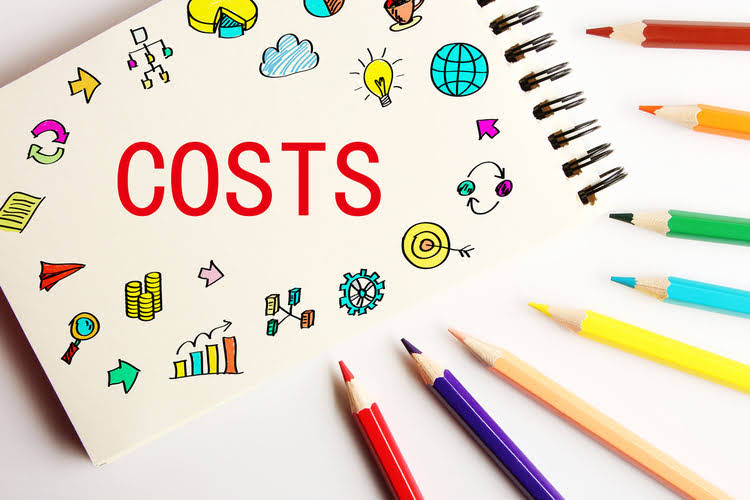
Generally, businesses issue invoices to Law Firm Accounts Receivable Management their customers or clients for goods and services rendered, which the latter treats as a bill (accounts payable). However, businesses can issue both bills and invoices to their clients. Invoices typically record recurring service-based purchases, whereas bills are issued for one-time purchases. A bill is a statement of charges outlining the amount a customer owes for goods received or services rendered. The purpose of a bill is to serve as legal evidence for the buyer and seller that a sales transaction took place.
What is a Customer Statement?
Bills, on their part, enable the business to have cash flows to sustain the running of the operations by their demand for payment upon request. If you are a business owner, using the correct type of document to collect payments is essential to getting your money on time. Understanding the differences between a bill and an invoice is one way to lessen the chance that you’ll have to chase outstanding invoices. A payment dispute with a vendor could be efficiently resolved using the detailed information provided in the invoice.
Why are they created, and what are the consequences of not sending invoices or bills?
At the same time, bills serve as a receipt for the payment you render to your suppliers or creditors. Invoices are commercial documents businesses issue to their clients to request bills and invoices payment for work by outlining the service provided and detailing the amount of money owed for the work. In business transactions, a bill is a document that a supplier sends to the consumer to obtain payment immediately for the goods or services rendered. This document serves as proof of transaction between the two parties, stating the amount to be paid and applicable taxes. The most immediate effect of unpaid invoice and bill is the disruption of cash flow.

Legal implications
In a related way, if you don’t send bills out on time, you might not get paid for the products/services you delivered to the client. Bookipay works hand in hand with Bookipi by offering a user-friendly platform for bill management. Its intuitive interface makes it easy to track and pay bills on time, avoiding late fees. Purchase orders are issued by buyers to formalize agreements for goods or services. Purchase orders streamline procurement and provide a transaction record.
- He considers himself a geek about invoicing, accounting, and related topics.
- Standards for electronic invoicing vary widely from country to country.
- An end-of-month statement details all outstanding transactions and the total amount owed.
- Provides a comprehensive record of the transaction, aiding in legal and financial record-keeping, tax reporting, and accounts receivable management.
- Another important distinctive feature of invoices is that they represent the presence of credit, as the seller is not receiving cash immediately, but at a future date.
- Bills are crucial for businesses of all sizes as they help track expenses, manage cash flow, and fulfill financial obligations.
- For example, a bill is created as soon as you purchase groceries or grab some food to go.
As an invoice is an official document, it must be handled in the appropriate way. For example, once an invoice has been finalised, it should not be deleted but rather cancelled with a credit note. It must also be numbered appropriately, using a specific invoice numbering sequence.

Examples of Bills and Invoices
Sometimes, the person you deal with directly is not the person who pays the invoice. In some cases, the person you’re in contact with will review and approve your invoice before forwarding unearned revenue it to the relevant person or department (such as the bookkeeping or accounting department). In other cases, you will send the invoice directly to the person responsible for paying you. To create an invoice, the most efficient option is to use invoicing software.
Understanding a Bill
- It allows you to know the right time to use which payment request to enable you to optimize your financial management and enhance your relations with customers and suppliers.
- While a bill is typically used in business-to-consumer (B2C) transactions, an invoice is more common in business-to-business or B2B payments.
- An invoice is a document sent before payment, while a bill is sent after payment.
- Mehul is a seasoned content writer with a passion for simplifying complex accounting and GST topics.
- Billing keeps clients informed on total account status, while invoicing facilitates payment for individual transactions.
- Life as an independent contractor or freelance business owner can be hugely rewarding.
For example, invoicing can be done after a client has ordered for services, at specific times during the work process, or when the whole work has been completed. These payment due dates and their differences have repercussions for the management of cash flows for persons as well as for businesses. An invoice allows some degree of flexibility in payment timings which is helpful in nurturing long term business engagements.

FAQs on Invoicing and Billing

The difference lies in when they are issued and how they are used for accounting purposes. While an invoice is raised to get payment from the customer, a receipt is issued after receiving the payment from the customer. The global e-invoicing industry is expected to grow by over 20% annually and reach $24.7 billion by 2027, highlighting the importance of invoicing to the global economy. Restaurants, bars, and hotels might rely on a billing process, granting their customers access to a product or service and billing them once the sales transaction is complete. The total amount that the customer owes can be printed or written on the bill. Invoices also offer a distinct advantage when it comes to recurring services.
- In business terms, a bill is a document a vendor or supplier sends to a buyer requesting payment for goods or services rendered.
- Invoices are essential elements of business accounting, and copies of each invoice are typically retained by all transacting parties—sometimes for tax purposes.
- With these tools at your side, you’ll not only save time but also improve accuracy, creating a better overall experience for yourself and your customers.
- An invoice should be sent to your customer once you have delivered the goods or services.
With customizable templates and advanced features like recurring invoices and expense tracking, users can create professional invoices quickly and track payments effortlessly. Freelancers and independent contractors rely on invoices to bill clients for their time, expertise, and services rendered. Whether it’s graphic design, web development, writing, or consulting, invoices provide a detailed breakdown of the work performed, hourly rates or project fees, and payment terms. Invoices also serve as a record of the agreed-upon terms between the freelancer and client, helping to avoid misunderstandings or disputes.
